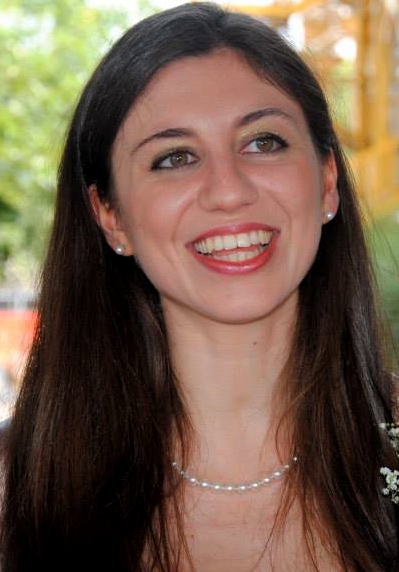News Story
Harnessing Non-Reciprocity
 Arches are a familiar sight to Eleonora Tubaldi, assistant professor of mechanical engineering at the University of Maryland (UMD).
Arches are a familiar sight to Eleonora Tubaldi, assistant professor of mechanical engineering at the University of Maryland (UMD).
A native of Italy, Tubaldi has drawn inspiration from the piazzas and promenades of cities like Milan and Rome as she explores new ways of harnessing energy in mechanical systems.
Now, Tubaldi and two colleagues from Harvard University, Katia Bertoldi and Gabriele Librandi, have demonstrated that non-reciprocity—that is, a state in which energy is transmitted asymmetrically between two points—can be realized with the help of snapping arch-like structures.
Moreover, multiple waves going in different directions can be sent through such a system. As part of their research, Tubaldi and her colleagues designed a reversible mechanical diode that can sustain multiple signal transmissions.
Wave transmission is normally reciprocal—a wave traveling from point A to point B behaves in the same way as a wave traveling in the opposite direction,” Tubaldi said. “That’s a fundamental law of physics. In our study, we break the law by incorporating nonlinearities—that is, elements where the output is not an integer multiple of the energy input—into the system.”
Until now researchers have only been able to send one wave at a time through the system, thus limiting its usefulness. Tubaldi and her colleagues, however, have found a way to overcome that limitation—and the key lies in the use of shallow arches.
Such structures are an example of a bistable, nonlinear element, “bistable” meaning that the element has two points of static equilibrium.
Through incorporating such elements, “we’re able to preprogram a signal within a mechanical system and sustain different signals,” Tubaldi said. “We’re not limited to one wave; we can send multiple waves. Before we could only send one signal, and then each time you have to manually reconfigure the elements. This isn’t useful if you want to use the system to program a language, or calculate complex algorithms.”
Through incorporating such elements, “we’re able to preprogram a signal within a mechanical system and sustain different signals,” Tubaldi said. “We’re not limited to one wave; we can send multiple waves. Before we could only send one signal, and then each time you have to manually reconfigure the elements. This isn’t useful if you want to use the system to program a language, or calculate complex algorithms.”
Potential applications include optics as well as mechanical computing, in which arrangements of physical elements are used to control waves of energy, which work in a way analogous to electronic signals--but without electricity.
“It can be useful in situations where either electronics aren’t feasible--for example, at very small scales, where electronics can’t perform, or if we’re deploying a device for space applications and we don’t want to rely too much on electronics, because if that fails, we are in trouble,” Tubaldi said.
“In such cases, we need to achieve the same programming and computing functionality through mechanical means. And that can be done, in part, by harnessing non-reciprocity.”
Below: a mechanical system devised by Tubaldi and colleagues stores potential energy and releases it on request, thus actuating ping-pong balls with a single input.
Published September 3, 2021









